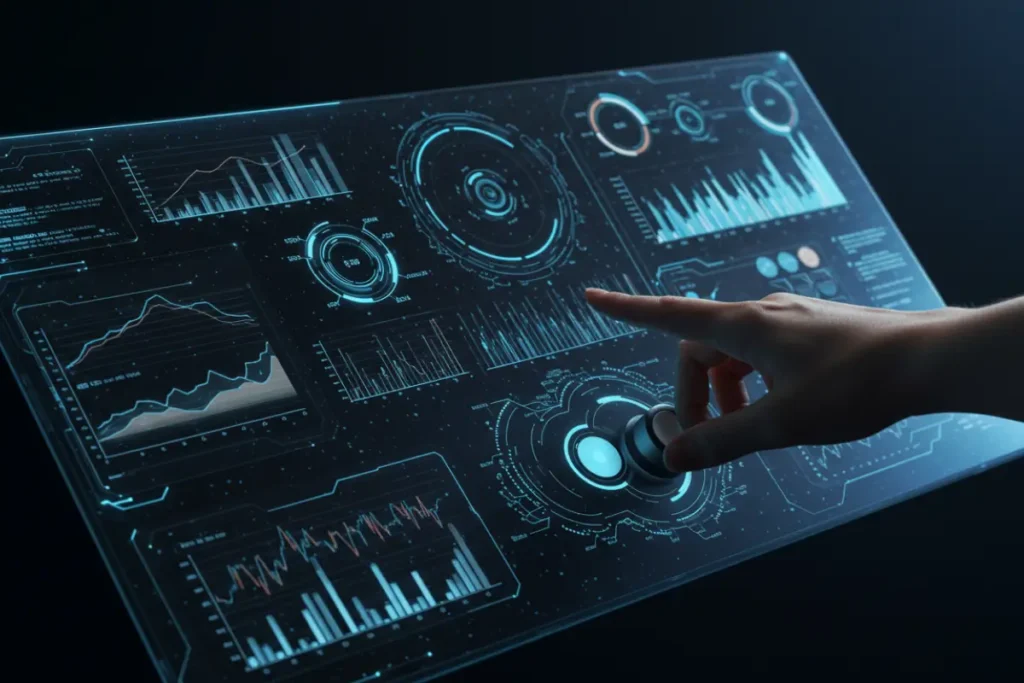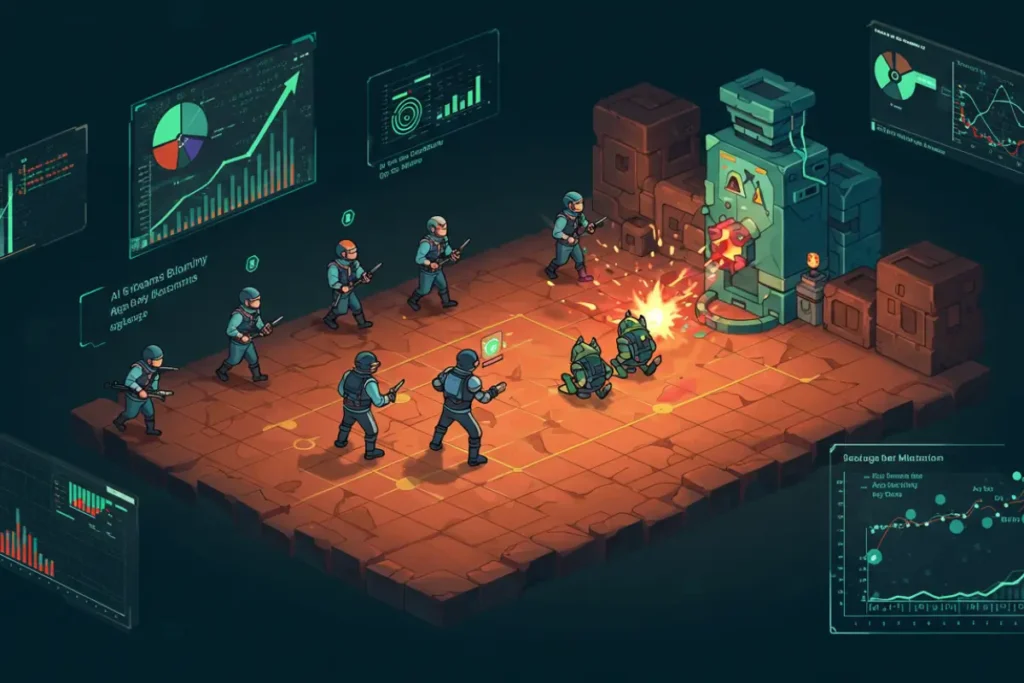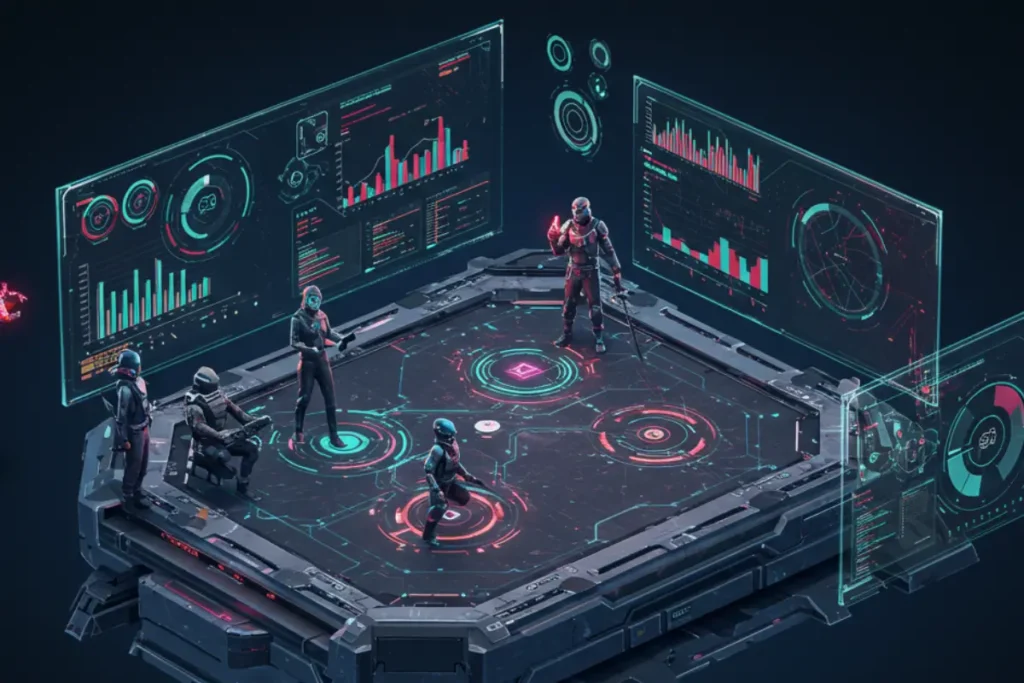How AI is Changing Game Balancing
- May 16, 2025
- 0
So, how do you understand the impact of AI on game balancing? 🌟 Well, let me break it down for you in a way that even Homer Simpson
So, how do you understand the impact of AI on game balancing? 🌟 Well, let me break it down for you in a way that even Homer Simpson

So, how do you understand the impact of AI on game balancing? 🌟 Well, let me break it down for you in a way that even Homer Simpson would get.
You know how in some games, you feel like the AI opponents are either too easy or impossibly hard? Yeah, that’s where AI game balancing comes into play.
It’s that secret sauce that keeps you on the edge of your seat, making sure every challenge is just right – not too hot, not too cold, but just perfect.

Game balancing is all about making sure that every player – whether they’re a newbie or a pro – has a fair and fun experience.
Think about it like this: Imagine playing a soccer game where your team is made up of world-class players and the other team is just a bunch of kids.
Not much fun, right? The same concept applies to video games. If one character or strategy is overpowered, it can ruin the whole experience. That’s why game developers use AI to keep things fair and square.
Now, you might be wondering, “Why AI?” Well, traditional game balancing relied heavily on manual adjustments by developers. They’d tweak numbers, run tests, and then cross their fingers, hoping they got it right.
But with AI, the game can actually learn from players’ actions and adjust the difficulty in real time. For instance, if the AI notices that players keep dying in a particular level, it can lower the enemy health or adjust the attack patterns to make things a bit easier.
According to Wikipedia, AI in games has come a long way from simple scripted behaviors to complex adaptive systems. And we’re just scratching the surface.
AI doesn’t just guess how hard or easy a game should be. It analyzes tons of data to get the balance just right. Here are some key methods:
For more insights on how AI adjusts difficulty levels, check out this article from Game Developer.

I love how AI can make games more fun without making them feel cheap. It’s like having a game that’s always evolving, always learning from you. For example, if you’re playing a racing game and you keep crashing into walls, the AI can adjust the car’s handling to make it a bit easier.
Or if you’re absolutely crushing the competition, the AI might throw in some tougher opponents to keep things spicy.
This adaptability keeps players hooked. You’re not just playing a static game; you’re playing a game that feels alive. And that’s where the magic happens.
But hey, it’s not all sunshine and rainbows. AI balancing can also go wrong. Imagine an AI that adjusts too aggressively, making a game impossible to beat or way too easy.
That’s why developers have to be super careful with how they implement AI. Here are some common challenges:

Want some real-life examples? Check out these games:
If you’re curious to learn more, check out this in-depth analysis on Kotaku.
Looking ahead, AI is only going to get smarter. Imagine games that can adapt not just to your skill level, but also to your mood, time of day, or even your physical condition. That’s the next frontier – truly personalized gaming experiences.
And hey, if you’re into AI and gaming, why not check out The Future of AI in Open World Games? It’s packed with insights on how AI is transforming entire game worlds.
Game balancing has come a long way, and AI is taking it to the next level. From adjusting difficulty to creating personalized experiences, AI is like that invisible game master working behind the scenes to keep you hooked. And honestly, I love it.
It makes every game feel like a new adventure, no matter how many times you play.
If you enjoyed this deep dive into AI game balancing, why not check out more on Futuristic Intellect? And hey, don’t forget to drop a comment below and let me know – how do you feel about AI changing the way games are balanced? Let’s chat! 🚀